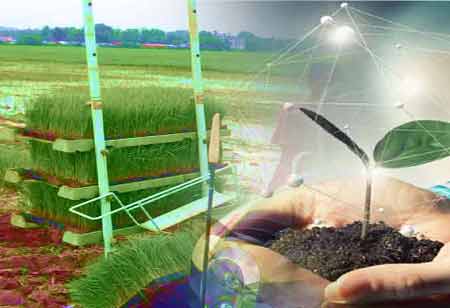Thank you for Subscribing to Agri Business Review Weekly Brief
A Guide to the Pros and Cons of Biochar
In recent years, biochar has garnered a lot of attention: some positive, and some bad.

By
Agri Business Review | Friday, July 28, 2023
Stay ahead of the industry with exclusive feature stories on the top companies, expert insights and the latest news delivered straight to your inbox. Subscribe today.
In recent years, biochar has garnered a lot of attention: some positive, and some bad. Biochar is super-charged charcoal, created when organic matter — wood, grain stalks, grasses, peanut shells, etc. — is burned slowly with almost no oxygen in an enclosed chamber at nearly 1,000 degrees Fahrenheit or higher.
Fremont, CA: In recent years, biochar has garnered a lot of attention: some positive, and some bad. Biochar is super-charged charcoal, created when organic matter — wood, grain stalks grasses, peanut shells, etc. — is burned slowly with almost no oxygen in an enclosed chamber at nearly 1,000 degrees Fahrenheit or higher. The outcome is a stable crystalline material rich in carbon that is resistant to degradation. Small chambers formed by pyrolysis (burning) can contain moisture, nutrients, and a variety of microbes.
Compost or livestock manure, additions that offer microbes and nutrients, work best when combined with biochar. By itself, it is not a fertilizer. Biochar varies widely based on the organics or feedstock used.
Because of the organic feedstock used in its production, biochar is sometimes considered the successor to biofuels. Such fuels have an uneven history, since sometimes they add to deforestation and greenhouse-gas emissions, and even at times deplete oxygen levels. Biochar raises alkalinity levels when applied to fields, making it critical that soils be tested and analyzed before deciding on their addition.
Biochar can have a lot of advantages when it is integrated into the natural cycles. Ten years ago, an Australian farmer started feeding the substance, mixed with molasses, to his cattle. The biochar was subsequently distributed by the cattle across pastures as manure. It was immediately buried underground up to 15 inches deep by dung beetles. Scientific analysis revealed a considerable change in the soil within three years. Moreover, the work of the beetles took the manure’s nitrogen underground, preventing it from becoming nitrous oxide, a serious contributor to global warming.
Another benefit of adding some biochar to cattle feed is a reduction of the methane they emit from digestion and burping. Depending on the feedstock and shipping, producing biochar can be expensive, but a financial analysis demonstrated a profitable return for the Australian farmer's system and the potential for quick commercialization.
The benefits of using biochar as an additive or component in natural processes can much outweigh the drawbacks. The organic feedstock ought to be agricultural or forestry waste and not a monoculture product. When the focus is on biological principles and the promotion of life, biochar has much to offer. It necessitates a change in agricultural practices from using chemical fertilizers and pesticides to encouraging soils rich in microbes, from an antibiotic to a probiotic approach.





